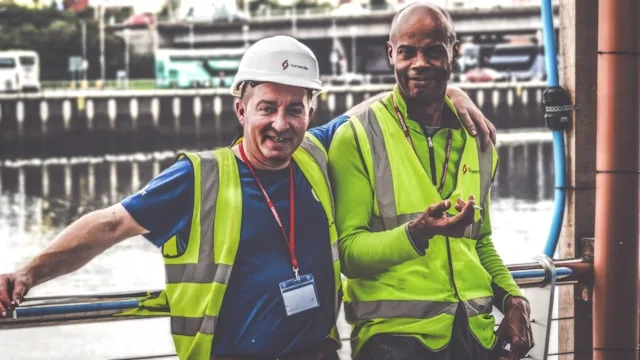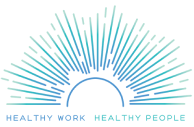Protecting and fighting for the health and safety of working people is a fundamental principle of the labor movement and other worker advocacy groups.
Healthy Work is the struggle for quality jobs that are fair, respectful and that also eliminate the harmful effects of sources of stress at work (work stressors). It is about creating work that is physically, psychologically and socially healthy.
We know from over 40 years of scientific research that sources of stress from the way work is organized (work-related psychosocial stressors) contribute to increased risk of injuries, burnout and depression, as well as high blood pressure and heart disease. (See Principles of Healthy Work to learn more.)
While not all unions and worker advocates have directly considered issues of “work stress” and “unhealthy work,” unions are dedicated to demanding manageable workloads (job demands), giving workers a voice (job control), fighting for paid overtime or limits to work hours (long work hours), work-life balance (for example, family/sick leave provisions and vacation time), grievance procedures and seniority/promotions (organizational justice), anti-bullying, discrimination and sexual harassment contract clauses, and occupational health and safety.
Healthy Work & “Health and Safety”
History tells us that working conditions start to improve only after workers stand together through protests, demonstrations, or strikes, and by joining unions. With the support of public health advocates and others, workers and their unions demanded health and safety standards and regulations to protect them from unhealthy conditions like toxic chemicals at work (e.g., coal dust, benzene, asbestos) and unsafe facilities and equipment. A long campaign for healthier workplaces led eventually to the passage of the U.S. Occupational Health and Safety Act (OSHA) in 1970.
Health and safety issues remain a major concern for labor unions and workers in general, due to insufficient enforcement by OSHA, as employers frequently ignore the minimum requirements of the law. Too many workers still face preventable injuries and diseases. Additional, often invisible, “root causes,” such as work stressors (the “psychosocial work environment”), can increase the risk of injuries and chronic diseases. (See Stats to Know to learn more.)
Unions can be more effective in protecting their members’ health and safety by working to reduce and prevent work stressors that can harm their members’ mental and physical health. Many unions are already tackling issues affecting #healthy work including, work intensification (often the result of understaffing, layoffs, or “lean work” practices), “job strain” (high demands, low control, little support), long work hours, shift work, “precarious” work (non-standard employment, temp work), bullying, discrimination and sexual harassment, and the respect and dignity all people deserve whatever job they have.
Healthy Work Resources
The Healthy Work Campaign (HWC) is committed to sharing with workers, their unions or other worker advocacy groups, what we have learned about healthy and unhealthy work (and its costs), as well as to proposing solutions.

As labor continues the struggle to advocate for better working conditions, economic and social equality for workers and families, the HWC is providing unions and other worker groups with tools and resources, including a Healthy Work Survey (HWS) (under development) to identify the work stressors that may be affecting working people you represent, as well as a toolkit of resources and interventions, including collective bargaining language, and examples of how to promote healthy work through labor-management committees or legislation.
We are seeking to collaborate with labor unions and other worker advocacy groups to forward the movement for #healthywork for all.
See our MISSION page to get the story behind our commitment to healthy work and the resources below to MAKE A DIFFERENCE to the health and well-being of working people.
What Is Healthy Work?
Use our Principles of Healthy Work & take the Healthy Work Survey to find out.
How Can We Address Unhealthy Work?
Use our Healthy Work Tools & Get Feedback.
How Can We Do More?
Thanks!
1. Goh, Pfeffer and Zenios. “The Relationship Between Workplace Stressors and Mortality and Health Costs in the United States.” Management Science, 2015






